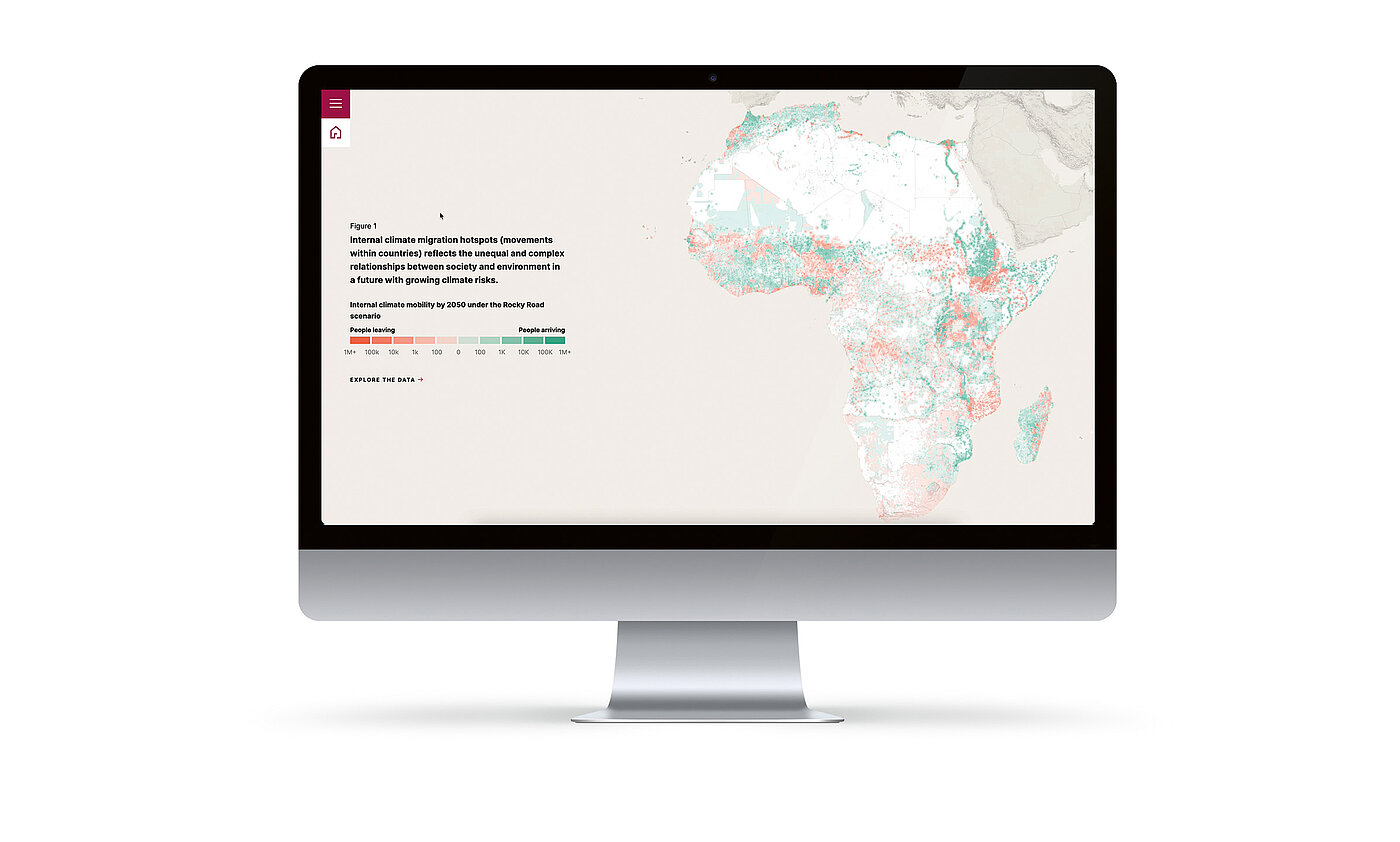![[Translate to English:] [Translate to English:]](/fileadmin/_processed_/b/4/csm_13-DP03219-2023BC_neu_d39612a441.png)
At CLEVER°FRANKE, founded in 2008, data, design and technology merge into stories that can be experienced intuitively. Whether in the form of installations, platforms or data strategies for companies, numbers are transformed into comprehensible content to reveal connections and often touch the audience emotionally. A perfect example is the visual presentation of a UNICEF research project that focused on climate mobility in Africa.
Interview with CLEVER°FRANKE
Red Dot: With “Voices from the Frontlines” you visualised the research results of UNICEF’s Africa Climate Mobility Initiative. What was the particular challenge here?
CLEVER°FRANKE: It was a matter of transforming the very extensive and abstract research data into comprehensible insights. We had to make sure that the project appealed to a broad audience: those affected, the general public worldwide, journalists and political decision makers. Through extensive collaboration and the use of diverse content, we ensured that the platform provided a way to learn more about climate mobility in Africa: from reading and empathising with personal stories to exploring research data in search of a rational overview of the issue.
Beyond translating the pure numbers, people’s stories are also told. Is such an approach indispensible for socially difficult topics?
Personal stories evoke emotions and make it possible to empathise with others. It is then easier to understand what climate mobility actually means to local people. We believe that the people-centred approach leaves a lasting impression and can inspire action.
There is also an interactive data portal on the website. What role does this tool play?
As our project is meant to appeal to a broad audience, the interactive data portal was particularly important for those who want to get a more factual overview of the situation, such as policymakers. Since “Voices from the Frontlines” also aims to show a way forward, the ability to engage with the data became a fundamental aspect of the initiative.
Were there any facts from the study that surprised you?
What was surprising was the realisation that relying solely on mapped data to assess climate change risks can lead to superficial conclusions. We are used to interpreting climate-related information in this way, but it was only during the interviews with specific groups – such as women, herdsmen and young people – that we truly comprehended the complex nature of the situation. These interviews provided qualitative data that shed light on why certain scenarios can be seen as both negative and positive by different people. For example, the younger generation showed a willingness to move, while others lacked the means or were emotionally attached to their homes.

